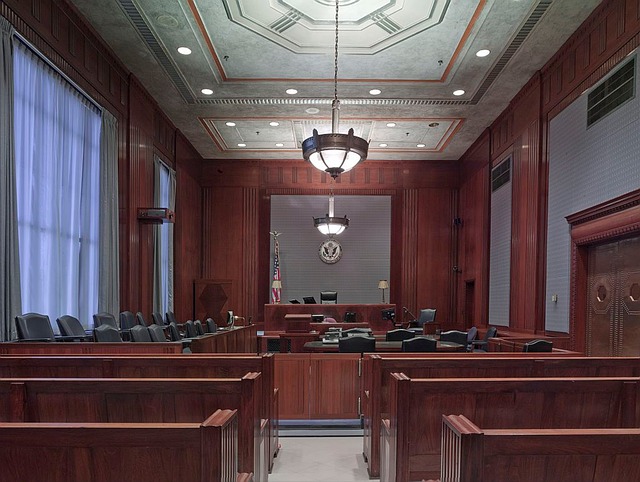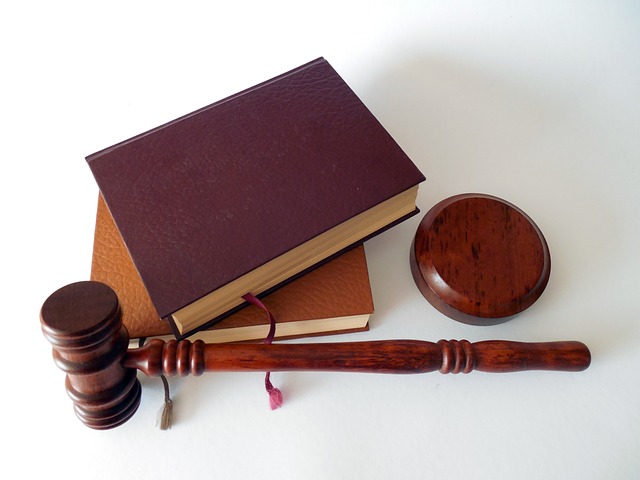Intellectual Property (IP) rights are essential for protecting innovation and creativity, with a comprehensive legal framework that includes patents, copyrights, trademarks, and trade secrets. These rights enable creators to invest confidently, knowing their work will be legally recognized and protected. Courts play a pivotal role in resolving IP disputes, setting precedents, and upholding the rights of IP holders against unauthorized use, particularly as technology evolves. Mastery of these laws is vital for businesses and individuals to maximize the benefits of their intellectual property. Expert legal guidance is often necessary due to the intricate nature of IP law, which includes steps like thorough registration, detailed documentation, and ongoing maintenance to establish and retain legal protection. Strategic litigation is also crucial for enforcing IP rights, with considerations for timing, venue, and the presentation of evidence in a courtroom that may not always have specialized knowledge. The international IP framework, anchored by agreements like TRIPS, EPC, and USMCA, aims to provide a predictable and harmonized legal environment for protecting IP globally, though navigating these treaties alongside national laws can be complex. Individuals and entities with international IP interests must engage with legal experts well-versed in both global IP norms and local courtroom practices to effectively protect and defend their intellectual property rights on a global scale.
navigating the complexities of intellectual property (IP) protection and enforcement is a critical endeavor for entities looking to safeguard their innovations and creations. This article delves into the multifaceted aspects of IP law, offering a comprehensive guide to understanding, registering, and defending intellectual property rights in today’s dynamic global marketplace. We explore the nuances of IP registration and documentation, providing insights that underpin robust protection strategies. Furthermore, we dissect strategic litigation approaches and courtroom tactics pivotal to effective IP enforcement. Additionally, the implications of international treaties and global frameworks are examined to ensure a well-rounded understanding of the legal landscape. Embark on an informative journey through these sections for an authoritative perspective on comprehensive IP protection and enforcement.
- Understanding Intellectual Property Rights in the Context of Modern Law
- The Mechanics of IP Registration and Documentation for Robust Protection
- Strategic Litigation and Courtroom Tactics for IP Enforcement
- Navigating International Treaties and Global IP Protection Frameworks
Understanding Intellectual Property Rights in the Context of Modern Law

Intellectual Property (IP) rights are a cornerstone in safeguarding the innovation and creativity that propels industries forward. In the modern context, IP law encompasses a diverse array of legal frameworks including patents, copyrights, trademarks, and trade secrets, each designed to protect distinct aspects of property. These legal instruments are crucial for fostering an environment where creators can invest time and resources into new ideas with confidence that their intellectual efforts will be recognized and protected by law. The courtroom plays a pivotal role in this ecosystem, adjudicating disputes over IP rights, setting precedents that shape future legal interpretations, and ensuring that the rights of IP holders are respected and enforced against infringement. As technology advances and new forms of intellectual creations emerge, the courts continually adapt to address novel challenges in IP law, maintaining a balance between protecting innovation and ensuring fair competition in the marketplace. Understanding the nuances of these laws is essential for businesses and individuals alike who wish to leverage their intellectual property effectively within the legal framework that governs it. Navigating the intricacies of IP rights without expertise can be daunting, highlighting the importance of consulting with legal experts who specialize in this domain.
The Mechanics of IP Registration and Documentation for Robust Protection

Under the purview of intellectual property (IP) law, securing robust protection for one’s inventions, creative works, or brand identity begins with meticulous registration and thorough documentation. This process is pivotal in establishing the legal recognition of an individual’s or entity’s property rights. Upon devising a new concept or creation, it is imperative to consult the relevant IP statutes applicable to your domain—whether it be patents for inventions, copyrights for original works, or trademarks for brands—to ascertain the appropriate form of protection and the corresponding registration procedures. The registration process involves submitting a detailed application, which includes a comprehensive description of the property in question, claims of novelty, utility, or originality, and evidence of the property’s use or intent to use. This documentation serves as the cornerstone of IP rights, providing the legal framework necessary for enforcement should there be infringement. Once registered, the details of your property are entered into a public database, creating an official record that not only informs potential infringers but also deterrents and provides grounds for legal recourse in the courtroom should disputes arise.
Post-registration, maintaining the integrity and enforcement of your IP rights hinges on diligent documentation and adherence to the ongoing requirements set forth by IP law. This includes updating registration details to reflect any substantial changes or renewing protection as mandated by law. The importance of this continuous process cannot be overstated; it ensures that your property remains under the protective umbrella of the law, safeguarding against unauthorized use and potential legal challenges in the courtroom. It is through these consistent efforts that IP rights are preserved, allowing rightful owners to exclusively benefit from their creative or innovative contributions within the marketplace.
Strategic Litigation and Courtroom Tactics for IP Enforcement

In the realm of intellectual property (IP) protection, strategic litigation plays a pivotal role in safeguarding one’s proprietary innovations and creations. Companies must navigate the intricacies of IP law with precision to ensure their legal standing is robust and their enforcement strategy is effective. When infringement occurs, choosing the right moment and the most appropriate forum within the courtroom can significantly influence the outcome. A well-orchestrated litigation campaign not only seeks to validate the ownership of the IP in question but also aims to establish a precedent that deters future infringements, thereby protecting the company’s interests and maintaining the integrity of their proprietary assets in the long term.
Courtroom tactics for IP enforcement are multifaceted, requiring a deep understanding of legal nuances and an ability to articulate complex technical details to judges and juries who may not have specialized knowledge. Pre-trial motions, expert testimony, and the selection of key pieces of evidence are all critical components in building a persuasive case. Furthermore, the timing of litigation can be as important as the strategy itself; initiating legal action at the right juncture can not only preserve the value of the IP but also send a clear message to the market about the seriousness with which IP rights are regarded by the IP owner.
Navigating International Treaties and Global IP Protection Frameworks

Navigating the complex landscape of international intellectual property (IP) protection requires a deep understanding of various global IP frameworks and treaties. The Agreement on Trade-Related Aspects of Intellectual Property Rights (TRIPS), established under the World Trade Organization (WTO), sets minimum standards for the enforcement of IP rights, including copyrights, patents, trademarks, and trade secrets. This universal standard facilitates a more predictable and harmonized legal environment for protecting property across different jurisdictions. Moreover, regional treaties such as the European Patent Convention (EPC) and the North American Free Trade Agreement (NAFTA), now succeeded by the United States-Mexico-Canada Agreement (USMCA), provide additional layers of protection tailored to specific regions. These agreements ensure that creators and innovators have legal recourse in courtrooms within member states, should their intellectual property be infringed upon, thereby safeguarding their rights on a global scale.
The interplay between these international treaties and the national IP laws of each country can present challenges. It is imperative for rightful owners to engage with legal experts well-versed in cross-border IP matters to navigate this intricate web. This is because while international treaties establish foundational principles, the enforcement of these rights often varies significantly in application from one legal system to another. As such, a comprehensive approach to IP protection and enforcement requires a nuanced understanding of both the global frameworks and local courtroom dynamics to effectively protect and defend intellectual property on an international stage.
In conclusion, the intricacies of intellectual property rights are pivotal in today’s fast-paced global marketplace. The meticulous process of IP registration and documentation serves as a foundational element for safeguarding one’s creations and innovations. Strategic litigation within the courtroom setting further solidifies the enforcement of these rights, ensuring that property owners can effectively protect their interests against infringement. Navigating the complex international treaties and global frameworks is essential for comprehensive IP protection, reflecting the dynamic nature of property law in the contemporary era. Understanding and leveraging these components are key to any robust intellectual property strategy, thereby securing a competitive edge in an increasingly interconnected world.
